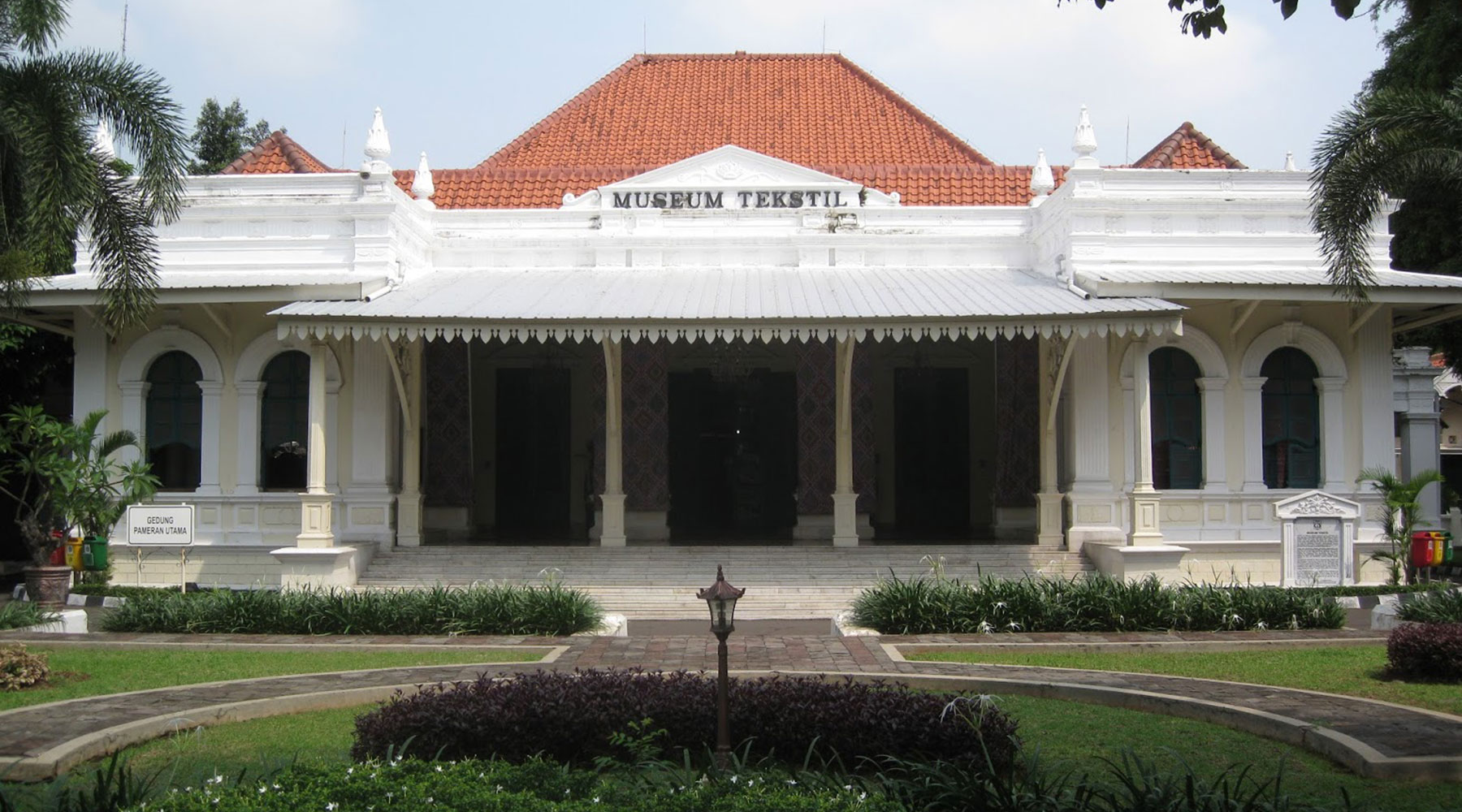Museum Textile in Jakarta is one of the art museums managed under the supervision of the Department of Tourism and Culture of the Jakarta City Government. Museum Textile was a villa owned by a French citizen who lived in Batavia (Jakarta) and was built around the 19th century. It was then sold to the Turkish Consul, Sayed Abdul Aziz Al Kazimi. In 1972, Museum Textile was finally inaugurated as a historic building protected by Indonesian law. The establishment of Museum Textile was pioneered by the idea of maintaining traditional fabric culture in Indonesia because of the high demand for modern textiles in the market. The Museum has cooperated with collectors and institutions throughout Indonesia in holding thematic shows in representing the ASEAN Textiles Exhibition and a Festival of Indonesian Textiles. Back then in 2009, UNESCO added Batik as an Intangible Cultural Heritage of Humanity and has been internationally recognized as a historical fabric of human civilization. There are numerous examples of Batiks in display rooms focused on particular areas of production throughout Indonesia.
Built-in land of 16.410 square meters consists of three main buildings that can be accessed by visitors, including the main building, supporting buildings, and gallery buildings. The entire building consists of several rooms and facilities that have their respective functions and a magnificent design interior.
Inside, the visitors are welcomed by the modern classic interior design in every space of the Museum. The warm painted wall with soft lighting and Tuscan column makes the look more classy. The visitors won’t feel like they are out of breath even though this is an old building with a lot of collections inside. This happens because of the use of a high ceiling design and some spots also have open wooden ceilings to filter the air. Realistic ceramic floor tiles with high entrance doors bring a more modern classic interior design to life.
In some other rooms, the visitors may see a type of Java old furniture; the classic wood chair and wooden carving display cabinet. In the right picture, the window is covered with Tuscan columns. Stone or hardwood columns can have gorgeous carvings and can be combined with Tuscan and Doric bases to complete beautiful columns and enrich the modern classic interior design with these unique architectural elements. The interior design of this building also uses different types of floors such as the soft-touched color of marble.
The visitors not only get knowledge about Batik, but they can also experience the making of Batik. This workshop is being held around the Textile Museum in a place called Pendopo Batik. The interior design of Pendopo Batik is inspired by a traditional house in Central Java known as ‘Rumah Limasan’. The soft colors of the wooden columns combined with the wooden tiles floor and brown teak wood window create a traditional look of ‘Rumah Limasan’ in Indonesia. The material combination of each element creates a perfect harmony of warmth for the visitors in this Pendopo Batik. Overall, the classic interior design of this room reminds a local traditional village of Java back in 1945's.
Inside the supporting building, the visitors are welcomed by the classic interior design of traditional houses in Jakarta. The placement of glossy transparent glass is giving the visual effect that makes this room look bigger. Other than that, the classic furniture such; as wood patio chairs, round tables, and antique hanging ceiling lamps make it more traditional. The whole design interior of the Textile Museum is very fascinating and it could intertwine modern and classic concepts.


